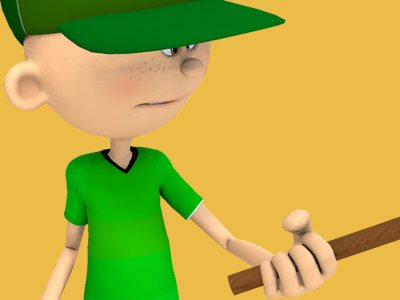Playing Field
The playing field is 300 by 160 yards (270 by 150 m), the approximate area of nine American football fields, while arena polo is 96 x 46 metres. The playing field is carefully maintained with closely mowed turf providing a safe, fast playing surface. Goals are posts which are set eight yards apart, centred at each end of the field. The surface of a polo field requires careful and constant grounds maintenance to keep the surface in good playing condition. During half-time of a match, spectators are invited to go onto the field to participate in a polo tradition called "divot stamping", which has developed to not only help replace the mounds of earth (divots) that are torn up by the horses' hooves, but to afford spectators the opportunity to walk about and socialise.
Outdoor polo
The game consists of four to eight 7 minute chukkas, between or during which players change mounts. At the end of each 7 minute chukka, play continues for an additional 30 seconds or until a stoppage in play, whichever comes first. There is a four-minute interval between chukkas and a ten-minute halftime. Play is continuous and is only stopped for penalties, broken tack (equipment) or injury to horse or player. The object is to score goals by hitting the ball between the goal posts, no matter how high in the air. If the ball goes wide of the goal, the defending team is allowed a free 'knock-in' from the place where the ball crossed the goal line, thus getting ball back into play.
County polo
With most clubs in the UK, players need to become members, and invest in at least two ponies to be able to play "standard" club chukkas. It is usual to play four back-to-back chukkas using each pony for two chukkas alternately, so that they each play, then rest and then play again.
For many people, this requires a very large financial investment, which can be too costly for some. County Polo creates more affordable parameters for newcomers to the sport. Players are only required to use one pony, which may be hired, or owned. This form of polo is usually played with three players per side—as opposed to the standard four-player polo—and therefore allows each player to get more involved and develop.
The County Polo chukkas are usually overseen by a qualified mounted Hurlingham Polo Association (HPA) instructor/umpire, who will coach and explain throughout the chukka.
With this format, including shorter chukkas, with breaks in between, the ponies are not getting over tired, so there is no need for such a large "string". Players may well continue to play polo at this level for many years, or players with more ambition could benefit from the tuition if they move onto more competitive polo.
County Polo is best complemented with regular stick-and-ball sessions, and regular wooden horse practice.
County Polo has had a resurgence in recent years, although the original County Polo Association was formed in 1898* to look after the interests of the country clubs and to run the County Cup Tournaments), the three London polo clubs—Hurlingham, Ranelagh and Roehampton—and from all associations within the Empire where polo was being played.
SPORTS

RESOURCES
This article uses material from the Wikipedia article "Polo", which is released under the Creative Commons Attribution-Share-Alike License 3.0.
© Stories Preschool. All Rights Reserved.









